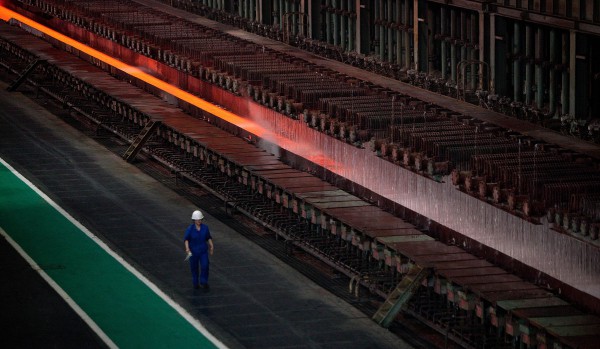 Most recent blogs have dealt with China’s current economic slowdown, the reasons for it and the government’s response. Today, The New York Times published an article under the title “For Chinese Economy, Strengths are now Weaknesses.” It highlights the actual and potential problems that the decline in steel demand will bring to the country. According to the author, the problem resides in the current state of the house construction and sales market, which is shrinking and has caused firms to go under and the domestic price of steel to “collapse.” Consequently, domestic steel producers were forced to export their product at a very reduced price
Most recent blogs have dealt with China’s current economic slowdown, the reasons for it and the government’s response. Today, The New York Times published an article under the title “For Chinese Economy, Strengths are now Weaknesses.” It highlights the actual and potential problems that the decline in steel demand will bring to the country. According to the author, the problem resides in the current state of the house construction and sales market, which is shrinking and has caused firms to go under and the domestic price of steel to “collapse.” Consequently, domestic steel producers were forced to export their product at a very reduced priced. In 2014, a journalist referred to the situation by saying “Chinese steel is as cheap as cabbage” (FT).
In the face of low domestic demand and extremely unfavorable exporting prices, a number of steel mills are expected to drastically reduce their activity or close completely; this could affect employment

In my last blog, I suggested how crucial it is for China to keep the unemployment rate under control. Rebalancing requires growth based on more consumption to avoid the negative effects of the overhang debt from the investment-led expansion. In that post I concluded that China’s best approach is to focus on quality rather than the quantity of growth. This can be done by reducing the resources allocated to intensive urbanization and using them for social transfers and job creation in the service industry.
I thought about giving the issue discussed in TNYT article a twist: The sharp decrease in demand for steel can ultimately force the shut down of numerous steel mills. Together with the smaller house market, this will cause slowdown of urban development. China is entering transition period, and the release of labor from the steel industry can free up high quality workers for use by the service industry. This will help transform economy into one that is more consumption based.
Basically, reallocating labor can give the service sector the boost it needs.
Sources: NYT on steel and ISSB and Bloomberg and tradingeconomics.com
Tie this in to Mr. Miller and CBB!!
The steel sector is one where local governments have protected, nay, fostered firms. Many are inefficient; there’s lots of excess capacity. In addition, it’s an industry with high fixed costs so there’s a strong temptation to keep pouring iron even when there’s weak demand for steel. While one portion of demand is for high-end uses such as automobiles, most of China’s production is of low-margin, commodity-end products. Inefficient mills are also bigger polluters than efficient ones, and making coking coal can be horribly polluting. [Coking coal is “metallurgical” coal that gets cooked in ovens to turn it into something similar to charcoal, physically strong but almost entirely carbon. Some coal is too soft or has too much sulfur…]
Anyway, back to Mr. Miller. Doesn’t the CBB find that there is no major employment problem at the moment? So it’s not so inopportune a time for throwing workers out of steel mills.
The workers involved will however not agree!